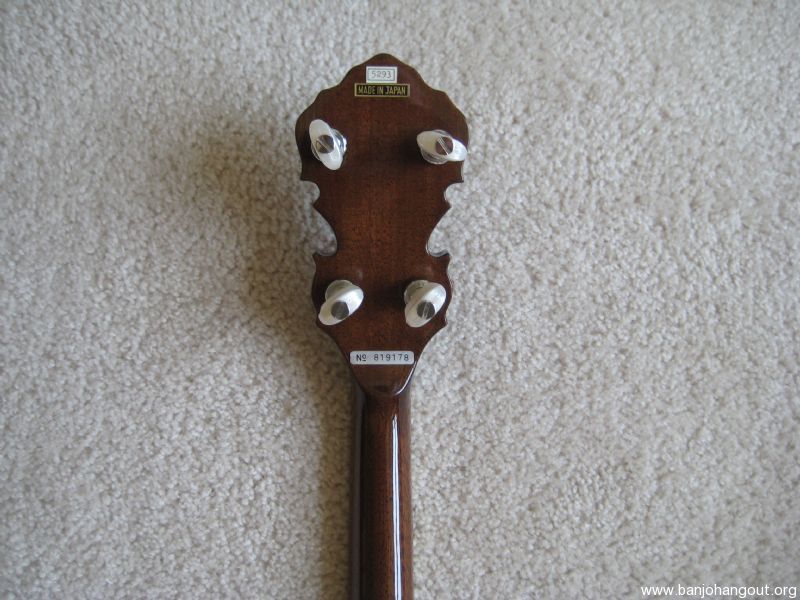

Features like bolt-on necks and pickups wired into the pickguard all helped the Fender factory churn out guitar after guitar, day after day. His guitars were built en masse by an entire factory, not a single luthier toiling over one instrument at a time. Like Henry Ford, part of Leo Fender’s genius was in optimizing the company’s production efficiency. The most important thing to keep in mind when dating a Fender is the highly modular nature of the designs. Fenders rank as the most frequently bought and sold instruments on Reverb, and finding a precise date of manufacture can be key to determining the value and specifics of an instrument. So you need to figure out the year of production for your Fender guitar or bass.
#FENDER LEO BANJO SERIAL NUMBERS REGISTRATION#
Having undergone numerous expansions, the North Street plant is still used today as a warehouse and shipping location for strings and accessories, as well as the site of Guitarmaker’s Connection, a retail supply house for instrument making and repair.Fender FSR Limited Edition ’52 Telecaster Are you seeking sex without obligations? CLICK HERE - registration is completely free! In 1859, a plant was constructed on the corner of Main and North Streets in Nazareth. Originally located in the Martin family homestead, Martin guitar operations had expanded to the point where a factory was needed. Since relocating from New York City to Nazareth, the Martin Guitar Company had evolved from a one-man operation into a thriving entity employing over a dozen craftsmen. Succeeding him at the helm of the young company was his son, 48-year-old Christian Frederick, Jr., who was born in Germany. Martin, Sr., died on February 16, 1873, leaving to his family and the musical world a fine tradition of guitar making. Still in use today on all steel-string Martin guitars, the bracing system is largely responsible for the distinctive Martin tone, characterized by brilliant treble and powerful bass response.Ĭ. Martin’s major design innovations, the "X" bracing system for the guitar top. So gradually, Martin phased out this unique neck adjustment.
#FENDER LEO BANJO SERIAL NUMBERS FULL#
While the adjustable neck allowed the player to adjust the playing actions of the guitar, the device was complicated and prone to slipping under full string tension. With the strings attached, the neck could be adjusted via a clock key inserted into the heel. At the top of the dovetail (where the neck joins the body) there was a wooden fulcrum about which the neck could pivot up and down. A screw mounted in the back of the heel of the neck was extended into the neck block. The headstock design with all the tuning keys on one side was discontinued by Martin and went unused until Leo Fender resurrected the design in 1948 with his Telecaster guitar.Īnother feature of the early Martin guitars was an adjustable neck. Martin acquired this design from his teacher in Vienna, Johann Stauffer. Until the mid-1840s, Martin guitars were characterized by a headstock that had all the tuning keys on one side. However, there were a few features that commonly incorporated in most of C. The early Martin guitars were totally hand-crafted products, made on a one-by-one basis, and there was little standardization. Born into a long line of cabinet makers, Christian Frederick took up the family craft at the early age of 15, when he left his hometown and traveled to Vienna to apprentice with Johann Stauffer, a renowned guitar maker. The story behind one of America’s most famous guitars began on January 31, 1796, in Markneukirchen, Germany, with the birth of Christian Frederick Martin, Sr. The concern for producing the finest instruments possible in 1833 is especially evident today at Martin’s expanded facility in Nazareth, Pennsylvania. Martin has never veered away from its initial commitment to quality. Throughout its colorful history, the company has adapted successfully to continual changes in product design, distribution systems, and manufacturing methods.

Martin has few rivals for sheer staying power.

Continuous operation under family management is a feat bordering on the remarkable, reflecting six generations of dedication to the guitarmaker’s craft. Martin, Sr.’s Stauffer influenced creations of the 1830s to recent developments introduced by C. The Martin Guitar Company has, through the years, managed to survive with each succeeding generation from C. For well over a century and a half, The Martin Guitar Company has been continuously producing acoustic instruments that are acknowledged to be the finest in the world.


 0 kommentar(er)
0 kommentar(er)
